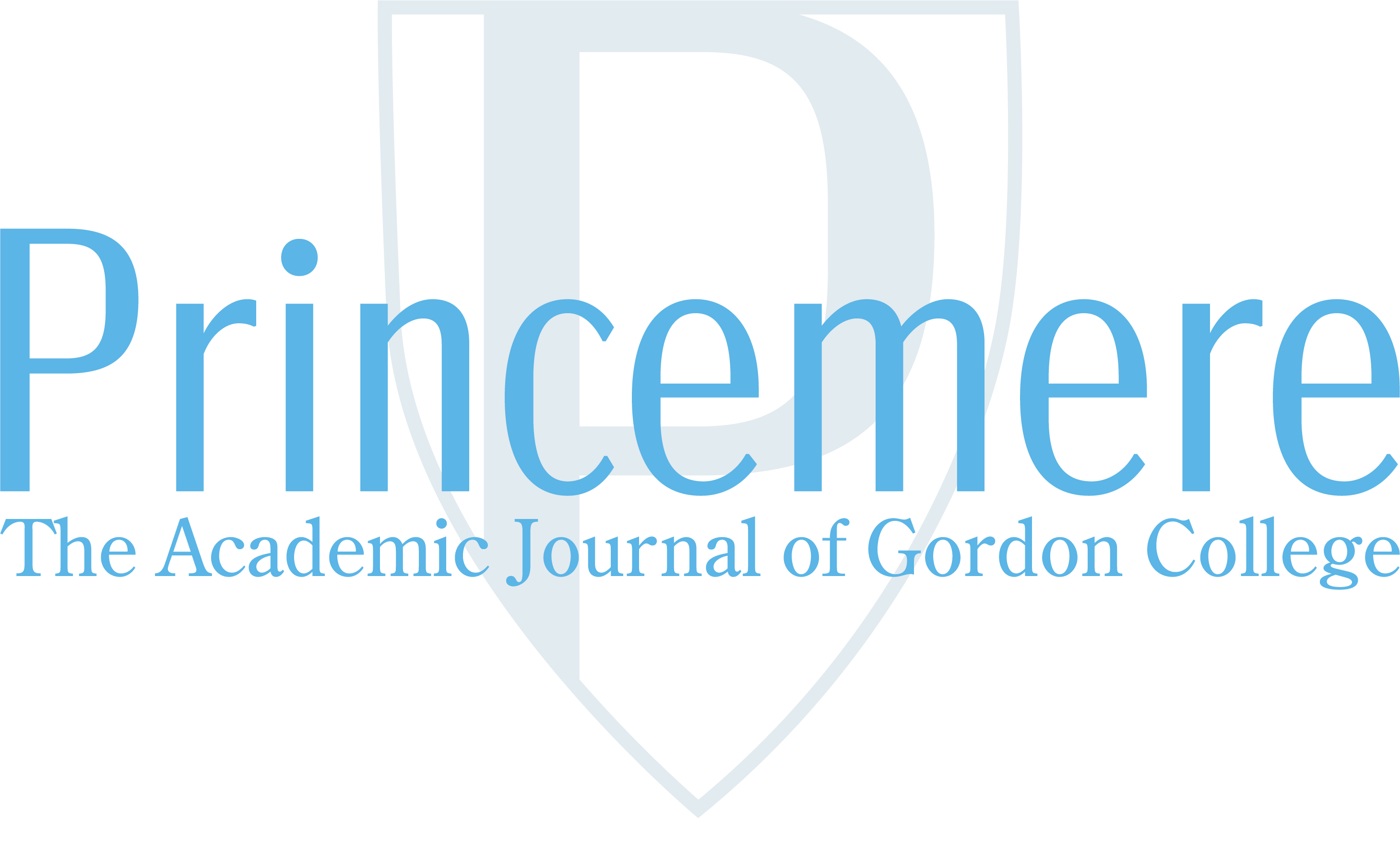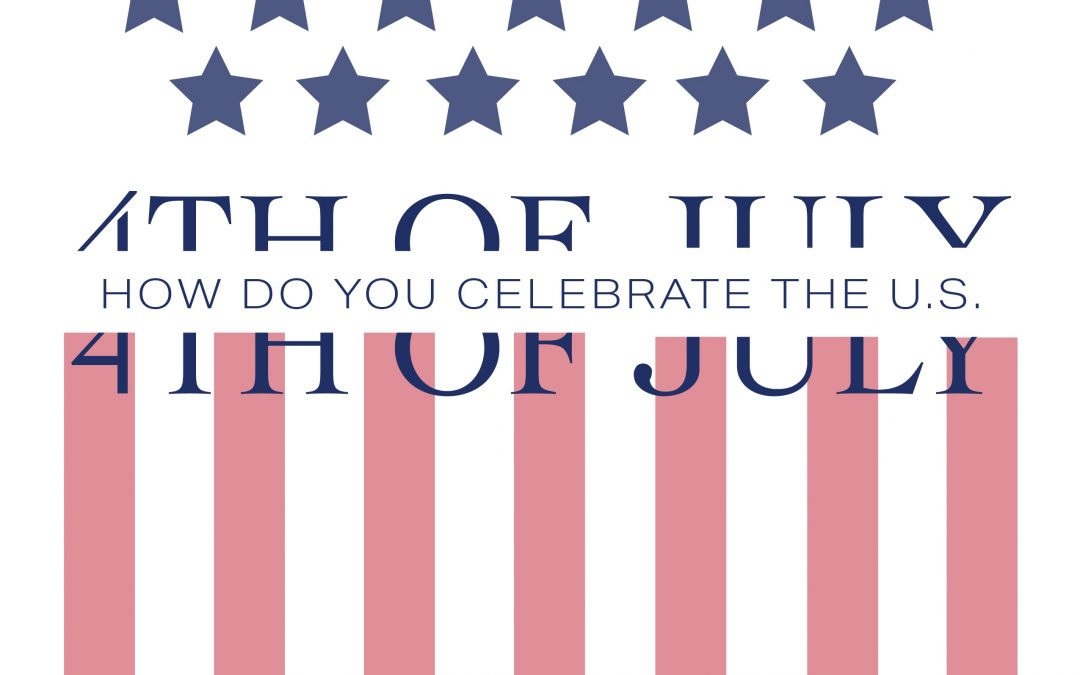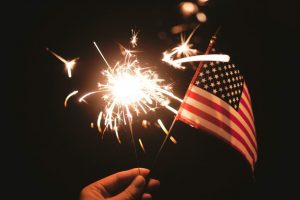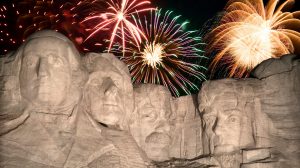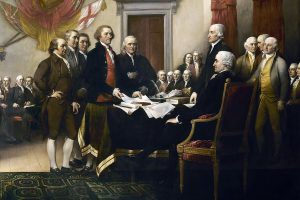Picture it:
All around you there is darkness and quiet— an almost palpable sense of anticipation. The summer wind blows hair across your face as your bare feet dig into the wet grass below you. You take a deep breath and look upwards to that brilliant night sky.
And then— there it is. All at once, there’s a crack that almost makes you jump— and a burst of light and color. The world is suddenly illuminated—reds and blues shining on the faces around you.
Some people clap, others whoop with joy. Children look up at the brilliant patterns in the sky with awestruck wonder.
It’s the Fourth of July— and it’s magnificent.
However, after emerging victorious from yet another war with Great Britain in the war of 1812, a newfound sense of national pride began to beat wildly in the hearts of the American people. Still, it wasn’t until 1870 that July 4th was made an official holiday (with the exception of the state of Massachusetts making it so in 1781.) With it came many of the traditions we know and love today. In many New England towns, songs celebrating patriotism were sung in town squares on the fourth and were often followed by a feast. Soon, what can arguably be called a hysteria grew as more and more fireworks were set off each year in celebration. Evidence of this can be seen by the many fatal and near-fatal accidents in the early 1900’s. In fact, in 1903 alone, 466 people died and 4,449 people were injured from holiday-related accidents on Independence Day. Shrapnel from fireworks and toy guns caused tetanus— a dangerous infection at the time that— in some cases— even led to death. The New York Tribune lamented the “carnage” of the
holiday and warned the American people of “the emergencies of over-patriotism” (Waters 1). This caused a ban on fireworks in many states as well as an impassioned plea that citizens celebrate the nation’s history in other, safer ways. Due to the awareness that the movement caused, parades and other non-hazardous means of celebration were implemented in towns across America. That said, the bans on explosives fell away pretty soon. Despite the danger even now of firework processions (12,900 people were hospitalized in 2017 for firework- related accidents), many Americans feel that no other tradition more effectively commemorates our independence than the awe-inspiring red, white and blue illuminations breaking through the
night sky.
At it’s heart, the Fourth of July is a day for celebrating community: a day for people to come together and celebrate equality and independence. In our modern culture, we know these traditions well as we wave our handheld flags and grill hotdogs in celebration. Through the years, the Fourth of July’s political importance has been overtaken by it’s cultural significance, though the reason for celebrating still remains. In fact, there’s even an almost satirically famous event: Nathan’s Famous Fourth of July International Hot Dog-Eating Contest. The competition has been held each Fourth of July since 1972, celebrating modern American traditions amidst a day meant for acknowledging the oldest ones. Today, the Fourth of July is seen as an equally commercially important day as it is culturally. According to the American Pyrotechnics Association, around 15,000 fireworks displays take place for the Fourth of July holiday each year and roughly 150 million hot dogs are consumed.
This year, we must acknowledge that Independence Day will be different. For the first time in well over a century, communities will be unable to gather together to watch the firework displays and the annual parades. Celebrations that once involved cookouts and games might now be limited to a Zoom or FaceTime call with relatives. However, in a culture that tends to celebrate the holiday more and more as a consumeristic summer get-together, perhaps the silence will remind us of the true reason for this day. While the cheerful festivities are undeniably a crucial part of the day’s history, let us not forget that liberty and freedom are the reasons for celebrating. Perhaps this year, the holiday is in need of some simplicity— and a remembrance of our founder’s ideals for our country: of one unified nation under God.
Works Cited
“10 Notable Fourth of July Celebrations Across America.” Google Image Result for
Https://Worldfootprints-10a16.Kxcdn.com/Wp-Content/Uploads/2018/06/Independence-Day-Sparklers–1024×682.Jpg, images.app.goo.gl/VfTH3PKmfhH8Dp8h8.
“10 Things You Didn’t Know About the Fourth of July.” Mental Floss, 4 July 2018,
www.mentalfloss.com/article/502369/fourth-july-facts.
Bartsch, Kayla. “’Guns, Bells, Bonfires, and Illuminations’ – A Brief History of the Fourth of July.”
National Review, National Review, 4 July 2019, www.nationalreview.com/2019/07/fourth-of-july-history-celebrations/.
Fourth of July Celebrations at the White House in the 19th Century.” WHHA (En-US),
www.whitehousehistory.org/fourth-of-july-celebrations-at-the-white-house-in-the-19th-century.
Geggel, Laura. “7 Famous Fourths: How Independence Day Has Transformed.” LiveScience,
Purch, 3 July 2015, www.livescience.com/51427-july-4-celebrations.html.
Heafner, Bob. “July 4th, 1900 – A Celebration To Remember.” The Mountain Laurel, 1984,
www.mtnlaurel.com/mountain-memories/363-july-4th-1900-a-celebration-to-remember.html.
Kazcke, Lisa. “Mount Rushmore Fireworks.” Argus Leader, 2020,
www.gannett-cdn.com/presto/2019/05/07/PSIF/ec2a8599-4b1b-4067-a612-bfc702cfd6b7-GettyImages-78055523_1.jpg?crop=5606,3140,x0,y0&width=3200&height=1680&fit=bounds.
Pruitt, Sarah. “Why Do We Celebrate July 4 With Fireworks?” History.com, A&E Television Networks, 3 July 2019,
www.history.com/news/july-4-fireworks-independence-day-john-adams.
“Making Sense Of The Fourth Of July.” AMERICAN HERITAGE, 1 July 2020,
www.americanheritage.com/making-sense-fourth-july.
“The History of the Fourth of July.” Google Image Result for
Https://images03.Military.com/Sites/Default/Files/2019-04/Fourth-of-July-Signing-Declaration-1800.Jpg, images.app.goo.gl/dL1G4zVZ9ZCmZGjBA.
Waldstreicher, David. “The Gilder Lehrman Institute of American History.” The Invention of the Fourth of July |
Gilder Lehrman Institute of American History, 1 Jan. 1970, www.gilderlehrman.org/history-resources/essays/invention-fourth-july.
Waters, Michael. “The 1900s Movement to Make the Fourth of July Boring (But Safe).”
Smithsonian.com, Smithsonian Institution, 2 July 2019, www.smithsonianmag.com/
history/1900s-reform-movement-made-fourth-july-safe-and-sane-180972537/.
Weisser, Ryan. “Photos: How Washingtonians Celebrated the Fourth of July in the 1910s.” Washingtonian, 28 June
2016, www.washingtonian.com/2016/06/28/how- washingtonians-celebrated-fourth-of-july-photos-1900s/.
